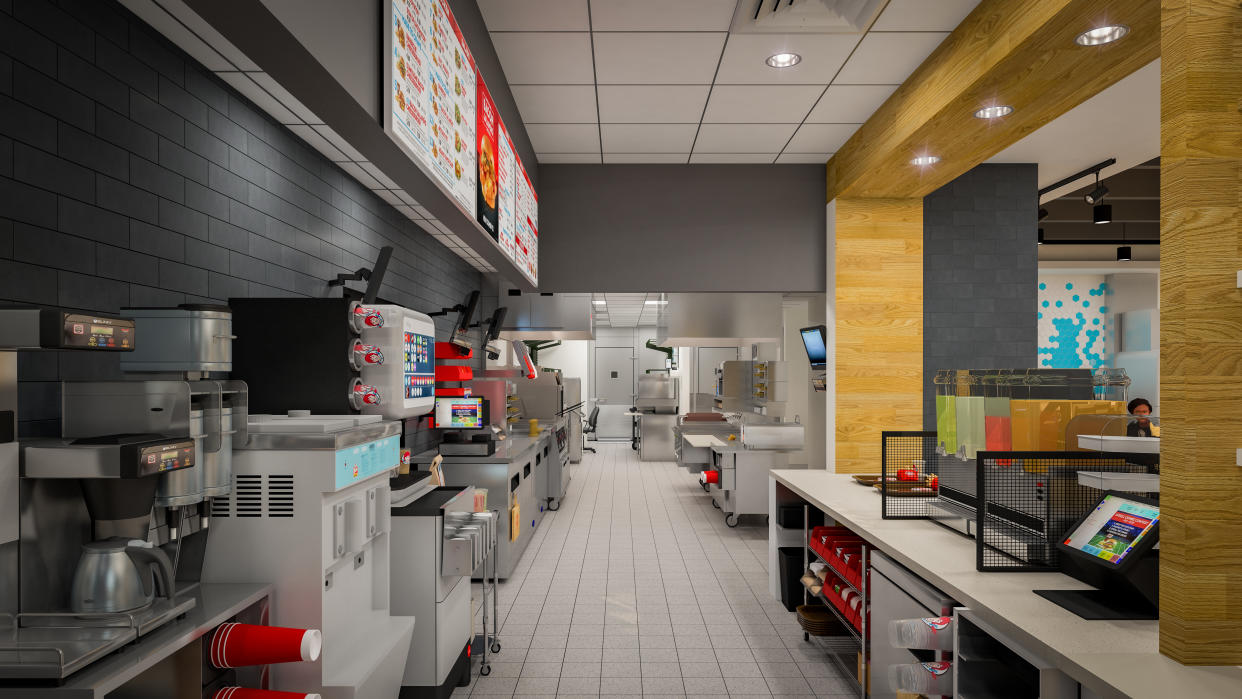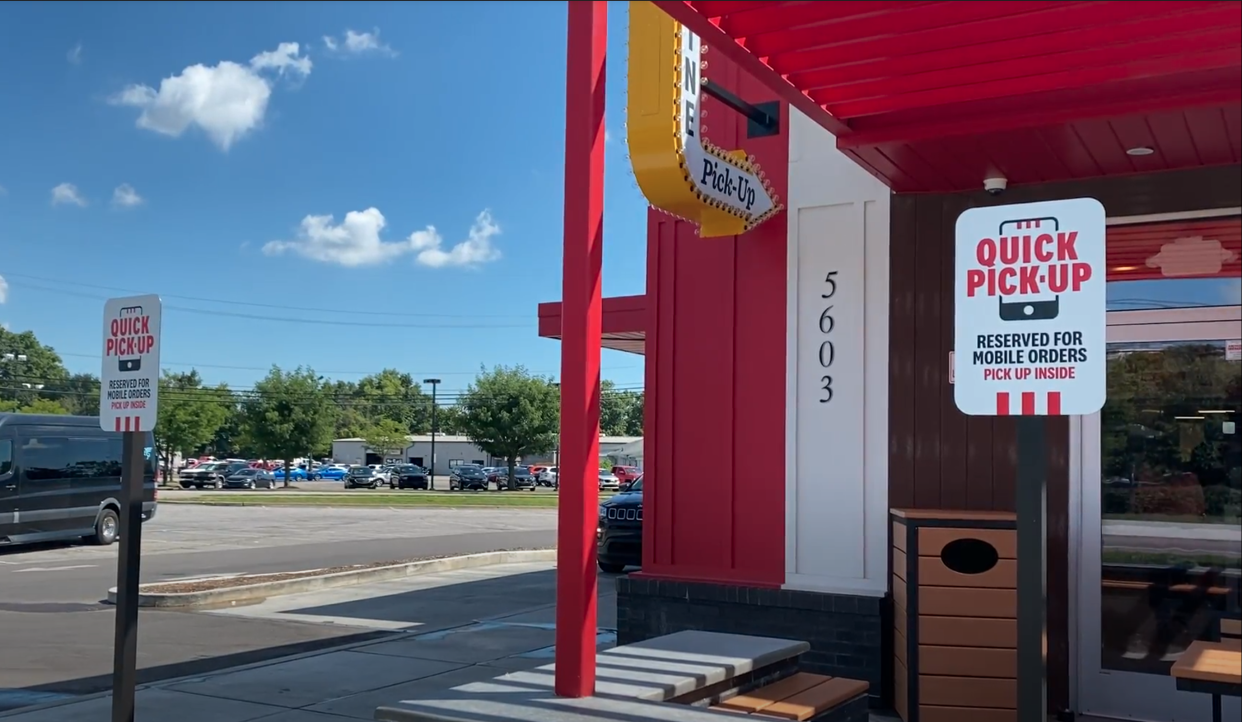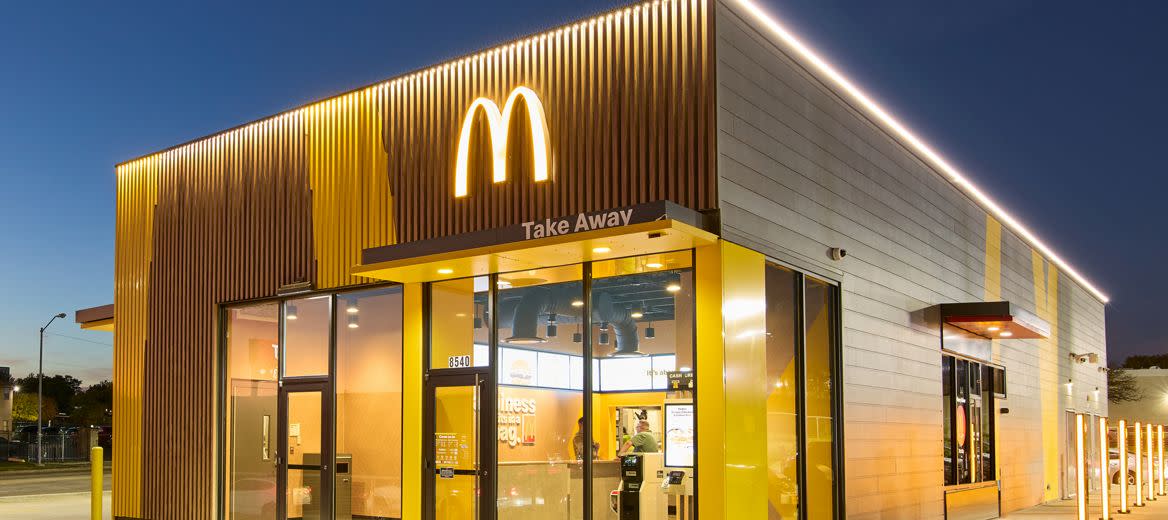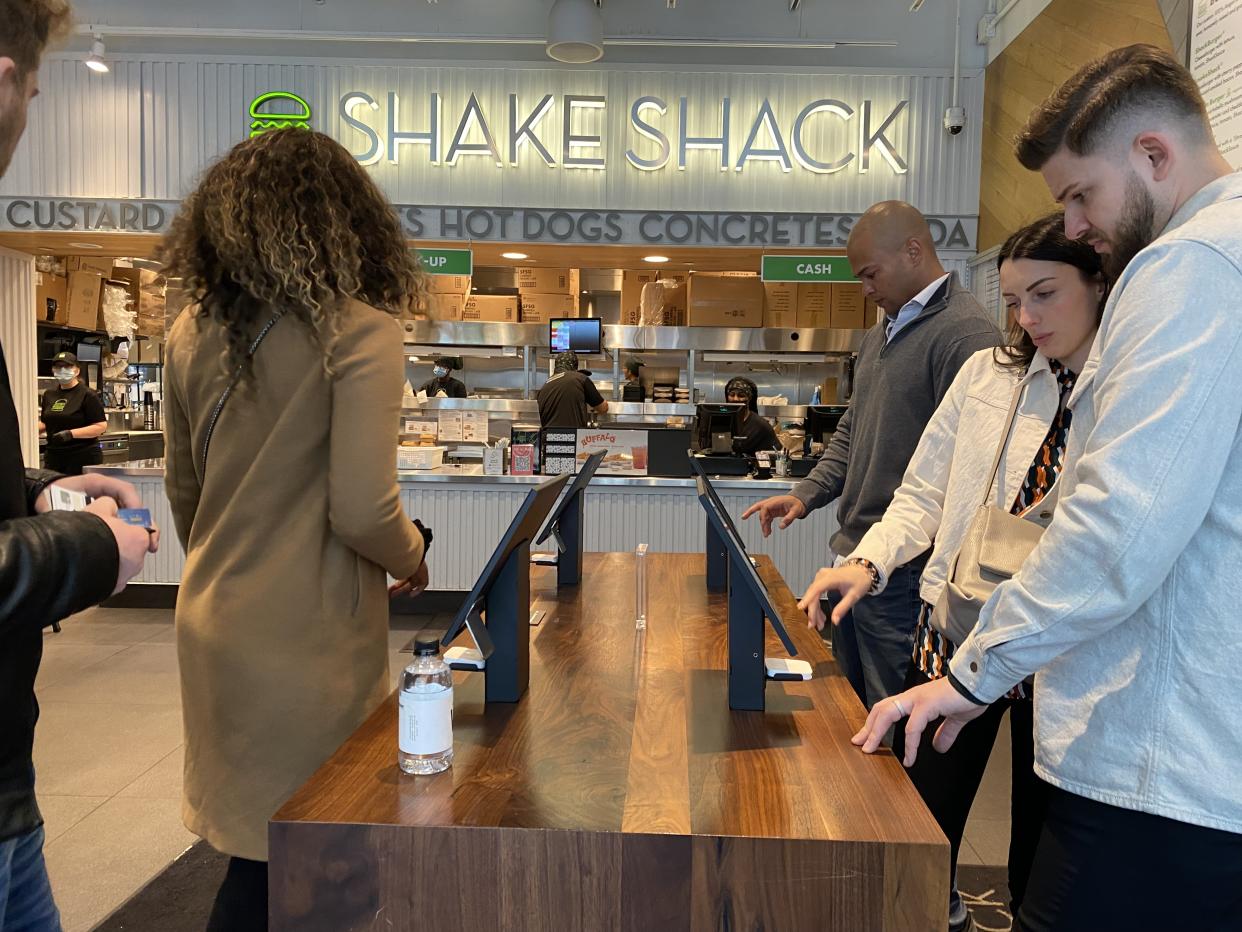Fast-food chains adopt futuristic designs: What's behind the new look from Wendy’s and others
Your next trip to a local Wendy's (WEN) may look a little different.
On Tuesday, Wendy's announced it's revamping its kitchens for restaurants with the highest customer demand. In doing so, the hamburger chain is the latest company to embark on restaurant redesigns aimed at maximizing digital sales and serving customers increasingly on the go.
And it's another sign major fast-food and fast-casual restaurants are leaning into technology as COVID-era dining trends stick around.
"We know that digital is part of the future and has been continuing to grow even before the pandemic around delivery [and] mobile," Abigail Pringle, Wendy's chief development officer, told Yahoo Finance in an exclusive first look at the new kitchen. "I think that is the way that you have to think about it from a design standpoint."
Here's a look at how quick-service chains are redesigning their restaurants for the future.
Wendy's refresh 'all about growth'
For Wendy's the end goal is growth — with digital at the core.
The new kitchen (pictured below) features a dual-sided layout that is intended to increase the speed and volume of service. The redesign allows for a nearly 50% increase in kitchen output capacity, the company said in an exclusive.

Wendy's first introduced its modern look, dubbed "Global Next Gen," in 2022. The upgrades, which target increased capacity for digital orders and third-party delivery, are now open in certain locations in Kansas and Oklahoma, with plans to open more than 200 of the same concept through 2024.
The design includes self-order kiosks, parking and shelves for mobile order pickup, and dedicated delivery pick-up windows and parking spaces. It will also incorporate technology geared toward handling increased digital orders and integrate elements of the new design in its 7,000-plus existing locations, Pringle said.
Digital sales currently make up about 12% of Wendy's sales mix, a number that "held relatively steady" compared to the previous quarter, Wendy's CEO Todd Penegor said on an earnings call with investors.
"This is all about growth going forward," Pringle said. "Our digital businesses [are] growing. Our drive-thru businesses [are] growing."
KFC looks off-premise
During the pandemic, restaurants adapted to offer a variety of dining options.
Today, more than 85% to 90% of consumers take meals to go, according to BTIG analyst Peter Saleh. That's compared to 70% pre-COVID.
And YUM! Brands-owned (YUM) KFC has pivoted to accommodate more mobile dining experiences.
Last summer, Yahoo Finance got an inside look at a new KFC location in Louisville, Kentucky. The chain added a double drive-thru, parking spots dedicated to mobile ordering, and online ordering pickup shelves for customers or delivery drivers from the likes of Doordash (DASH), Grubhub (TKWY.AS), and UberEats (UBER).

At the time, KFC chief development officer Brian Cahoe told Yahoo Finance that customers should expect a design that is "forward-looking from an off-premise channel access standpoint."
McDonald's, Dutch Bros. refine dining areas
With more customers no longer lingering at tables, food chains are experimenting with shrinking their dining room footprints too.
While Wendy's said its new Next Gen design features increased seating for diners, the same isn't true for new designs from its top rival, McDonald's (MCD).
In late 2022, McDonald's introduced its first fully automated test restaurant in Forth Worth, Texas, as part of the company's growth strategy, "Accelerating the Arches."
"When you step inside the test restaurant concept, you’ll notice it’s considerably smaller than a traditional McDonald’s restaurant in the U.S.," the press release stated. "Why? The features – inside and outside – are geared toward customers who are planning to dine at home or on the go."

Last quarter, McDonald's digital sales totaled $8 billion across its six biggest markets.
"There's only a very small percentage that's actually being consumed in the restaurant in the US, so the need for ... dining room seats is nominal," Saleh said. "There aren't many people who just who are going to consume in the actual restaurant, ... so why would you build restaurants with a lot of seating?"
Dutch Bros (BROS), which aims to open 4,000 shops over the next 10-15 years, is also rethinking its footprint.
"We've evolved the way that [our shop format] looks, the size that it is, the way that it could handle the capacity of customers that we have," CEO Joth Ricci told Yahoo Finance last week about the 30-year-old business. "We continue to refine the inside of our shop operationally to make sure that it's efficient as possible to manage for the future."
Chipotle, Potbelly designs drive throughput
Earlier this year, Chipotle (CMG) announced its own plans to revamp its kitchen with a new double-sided grill. It's an efficiency play that promises to slash cooking times for chicken from 12 to four minutes and for steak from four minutes to one minute.
"You don't have customers waiting, [and] you don't have to bring in the labor as early," BTIG analyst Peter Saleh said on some of the redesign's benefits.

In another bid to speed up customers' orders, Potbelly CEO Bob Wright recently told Yahoo Finance it repurposed its back line, intended to serve catering orders, to fulfill digital orders instead via its Potbelly Digital Kitchen.
"That digitized the back line in Potbelly so that when we receive those digital orders, we're able to process them much more efficiently," Wright said. "It also includes ... an in-line order-taking tablet that allows us to go deeper into the line, start the customer's order sooner, and it's driving throughput in our peak volume periods."
"It's not terribly technological, but it's a powerhouse for us," he added.
Shake Shack kiosks drive 'much higher check'
Why introduce all these digital-first designs now? Digital orders tend to lead to higher checks, experts say.
These investments are "a lot of up front," Saleh told Yahoo Finance. "But there's a lot of benefits to digital. Digital checks, whether it's through a kiosk or on your phone or through a third-party app ... they're usually [a] much higher check."
Over at a fast-casual chain, Shake Shack (SHAK), kiosks lead to higher checks than traditional cashiers.

"Kiosks enhanced guest convenience while driving a higher average check and, in turn, profitability," Shake Shack CEO Randy Garutti said on the company's second quarter call with investors. He added the company plans to put kiosks in nearly all Shacks by the end of the third quarter.
Restaurants need the customers first
Furthermore, Morningstar analyst Sean Dunlop said restaurant refreshes "create a little bit of an unlock" in terms of actual sales implications.
"Restaurant refreshes and remodels, historically, have correlated with a mid to high single digit (6%-7%) increase in traffic at that store," Dunlop told Yahoo Finance. "The store is more inviting, it looks more modern, consumers might be more comfortable actually spending time there."
But not all brands have a smooth transition into the future.
Last September, Restaurant Brands International (QSR) announced a $400 million "Reclaim the Flame" plan to bring Burger King into the future.
With $32 million invested so far toward advertising and digital investments and $35 million toward remodels and relocations, restaurant technology, kitchen equipment, and building enhancements, Burger King CEO Joshua Kobza stated the "early results ... give us confidence in the trajectory of the brand."
But according to Dunlop, a turnaround in sales may require more than just building improvements.
"If the customers aren't already trying it, they are not going to see those changes," he said. "If you're Burger King, and you only got two people in the drive-thru, the improvement between filling an order in four minutes versus filling an order in three and a half doesn't doesn't really move the needle" when compared to similar improvements made by McDonald's or Chick-fil-A, which recently introduced a new restaurant concept too.
Still, as dining preferences change, restaurants have little choice but to look to the future.
"Honestly, in the restaurant world, if you don't evolve and you don't change and you don't remodel, you become stale and your brand becomes stale," Saleh said.
—
Brooke DiPalma is a reporter for Yahoo Finance. Follow her on Twitter at @BrookeDiPalma or email her at bdipalma@yahoofinance.com.
Read the latest financial and business news from Yahoo Finance
